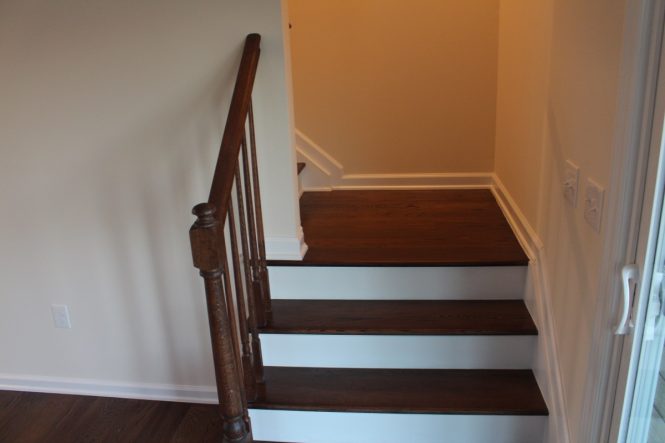

DIY stair repair is a project that many homeowners tackle to save money and enhance the aesthetic appeal of their homes. With the right tools and techniques, it can be a rewarding home improvement project. This guide will walk you through the process, from identifying problems to completing the repair. We’ll cover common issues, provide practical advice for safe and strong fixes, and ensure you’re confident in the final result. This comprehensive guide will cover all aspects of DIY stair repair, including problem diagnosis, material selection, safety considerations, and step-by-step instructions. We will also emphasize the importance of safety throughout the process.
Identifying Common Stair Issues
Recognizing Signs of Deterioration
DIY stair repair often starts with recognizing the early signs of issues with your staircase. These problems can range from minor imperfections to significant structural concerns. Look closely for signs of damage, such as loose or broken steps, uneven or misaligned steps, splintering wood, warped or damaged wood, loose or missing handrails, and squeaking or creaking sounds. Visual inspection is key to determining the extent of needed repairs.
Choosing the Right Materials
Essential Supplies and Tools
Selecting the right materials for your DIY stair repair is crucial for both the longevity and aesthetic appeal of your project. If the steps are made of wood, you’ll need appropriate wood fillers, sanding materials, and finishing materials like varnish or stain. If the steps are made of composite material, the appropriate repair products would be essential to address the damage. Assessing the type of damage will help you select the correct materials.
Preparing the Area for Repair
Safety First
Safety is the foremost priority when undertaking any DIY home repair project, and stair repair is no exception. Ensure the area around the staircase is clear and well-lit to prevent accidents. Secure any loose items or obstacles that could pose a hazard during the repair process. Remove any excess material such as damaged wood or parts. Secure the working area to make sure there is no movement while carrying out the repair. Wear appropriate protective gear, including safety glasses, gloves, and sturdy work shoes.
Executing the Repair Steps
Step-by-Step Instructions
The specifics of how you proceed depend entirely on the nature of the damage. However, a general strategy applies. Carefully assess the damage to each step. If wood is splintered or cracked, use appropriate wood filler or a similar product. Evenly distribute the filler and allow it to set completely according to product instructions. Sand the filled area to smooth it out and achieve a consistent look. Then apply a wood stain or varnish to match the existing wood.
Finishing Touches and Safety Checks
Final Inspections
Once all the repairs are complete, take time to inspect the work thoroughly. Ensure that all steps are level and securely attached. Check for any unevenness or gaps. Inspect the handrails for any loose or broken components. Ensure the handrails are properly secured and stable. Testing the overall stability of the stairs is a significant part of ensuring the safety of yourself and any occupants of the house.
Additional Considerations
Advanced Repair Techniques
Advanced repair techniques might be necessary in more extensive damage scenarios. For example, if the structural integrity of the steps is compromised, professional help might be needed. Working with contractors can save you time and money if your project involves complex issues beyond your skillset.
Budget Considerations
Estimating Repair Costs
Estimating the costs involved in DIY stair repair can save you significant money compared to professional repair services. The costs depend on the extent of the damage and the specific repairs needed. Consider the types of materials needed, the tools required, and labor costs if professional assistance is needed. This will help create a budget and manage your expectations.
Resources and Further Reading
Finding Helpful Information
Numerous online resources and DIY home improvement websites can provide additional information and tips on DIY stair repair. Reading articles or watching instructional videos can help you learn new skills and improve your understanding of specific methods for fixing damaged components of your staircase.
Maintenance and Prevention
Proactive Measures for Longer Lifespan
Regular maintenance can prevent future stair repair issues. Periodically check for signs of wear and tear. Clean the steps regularly. Ensure proper support for the steps is present. Addressing these issues proactively will help ensure your stairs remain strong, safe and beautiful for years to come.
[
{“question”: “What are the common issues with wooden stairs that need DIY repair?”, “answer”: “Common problems with wooden stairs include loose or broken steps, uneven or misaligned steps, splintering wood, warped or damaged wood, loose or missing handrails, and squeaking or creaking sounds. Recognizing these issues early on allows for timely and effective repairs, preventing potential safety hazards and aesthetic damage.”},
{“question”: “What are the essential safety precautions to take while doing DIY stair repair?”, “answer”: “Safety is paramount. Clear the area around the stairs to prevent accidents. Wear appropriate safety glasses, gloves, and sturdy work shoes. Secure any loose items or obstacles. Take breaks as needed. Consult a professional if you feel uncomfortable doing a repair yourself. It is important to follow the product instructions and guidelines to ensure that the repair process is efficient and produces safe results.”},
{“question”: “What are some tips for choosing the right materials for DIY stair repair?”, “answer”: “The right materials will influence both the longevity and the aesthetic quality of your project. Assess the type of damage. Consider wood fillers, sanding materials, varnish, or stains for wood steps. Using compatible repair products ensures proper adhesion and a lasting outcome.”}
]
In conclusion, DIY stair repair can save you significant money and offer a sense of accomplishment. By understanding the common issues, choosing the right materials, and following these detailed steps, you can tackle this home improvement project with confidence. Remember safety is paramount; if you’re unsure about any step, consult a professional. Now go forth and fix those creaky stairs!